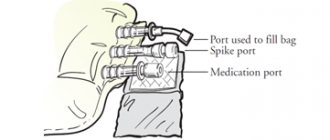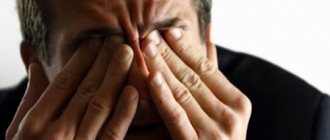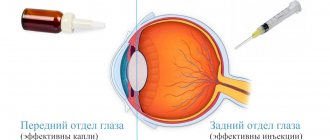Cancer is an extremely common disease that manifests itself as uncontrolled, unlimited division of cells in an organ or tissue without the phenomenon of their full maturation.
In this case, colonies of perverted cells (primary cancer tumor) are formed, which are not only unable to fully perform the functions of the corresponding organ, but also, by introducing and replacing healthy surrounding tissue, significantly disrupt its functioning. In addition, the cells of the primary tumor with the blood or lymph flow are able to enter other organs or tissues, causing the growth of similar formations (metastases) there.
At later stages of their development, tumor cells begin to interfere with normal metabolism, producing products that are toxic to the body and creating conditions that are unacceptable for healthy cells.
Such aggressive “behavior” of tumor cells, leading to the most profound damage to the body, poses a great danger to human life. This was the reason why cancer acquired the name “malignant neoplasms”.
Unlike malignant ones, benign neoplasms (benign tumors) do not pose a threat to human life - their growth is limited by the capsule; benign tumor cells do not invade surrounding tissues, are not transferred to other organs, and do not form metastases. Benign tumors are easily and completely removed surgically and do not require drug treatment.
In the general structure of diseases, malignant neoplasms occupy third place after diseases of the cardiovascular and respiratory systems.
The most common types of cancer include breast cancer, cervical and uterine cancer in women, prostate cancer in men, lung cancer, skin cancer, colon and rectal cancer, stomach cancer, and blood cancer - acute lymphoblastic or myeloblastic leukemia.
Cancer treatment is usually complex: it includes the use of antitumor drugs (chemotherapy), as well as surgical treatment (removal of the primary tumor and its metastases), and radiation therapy.
Antineoplastic drugs are a broad class of specific drugs that are used to treat malignant neoplasms.
Depending on the origin, mechanisms of action and effectiveness profile, antitumor drugs are classified into alkylating agents, antitumor antibiotics, antimetabolites, enzyme preparations, hormonal and antihormonal agents, platinum preparations, enzymes and enzyme inhibitors, alkaloids - drugs of plant origin, etc.
A separate class of antitumor drugs are sex hormone preparations. Let us consider in detail one of the subclasses of sex hormones - androgens.
Androgen drugs are drugs that are similar in structure and perform the functions of male sex hormones (in particular, testosterone).
Table of contents
- Etiology and pathogenesis
- Clinical manifestations
- Principles of treatment
Hirsutism in women is excess male-pattern hair growth. Contrary to popular belief, the disease can also occur in men, but this article discusses only the female version.
In our company you can purchase the following equipment for the treatment of hirtusism in women:
- M22 (Lumenis)
- Lightsheer DUET (Lumenis)
- LightSheer DESIRE (Lumenis)
According to statistics, approximately 10% of women living in the United States and Northern European countries have signs of hirsutism. There is little reliable information for other regions of the world.
Drug therapy
Drug treatment of androgenetic alopecia involves the use of the following groups of drugs:
- dihydrotestosterone blockers;
- vitamin and mineral complexes;
- oral contraceptives that normalize hormonal levels in women;
- sedatives;
- antidepressants.
For external use, the following agents are additionally prescribed:
- hair growth stimulants in the form of lotions, sprays, masks;
- antiandrogens in the form of ointments, creams;
- copper peptides in the form of shampoos, conditioners, sprays.
Etiology and pathogenesis
The hormonal level and structural features of the hair follicle determine the condition of the hair - its length, thickness, crimp, growth rate, localization, etc.
After birth, thin and weakly pigmented hair gradually begins to grow on the child’s body - they are called vellus (vellus). Their diameter does not exceed 30 microns, their length is less than 2 cm. Vellus hair is devoid of medulla and the muscle that lifts the hair, and its bulb is located at the level of the reticular layer of the dermis. In adults, vellus is present on the scalp - for example, in the frontoparietal zone (here the norm is 20% of vellus hair).
As we grow older, androgens are activated in the body, which contribute to the transformation of vellus hair into terminal hair (larger and more pigmented). The degree of transformation is influenced by the level and duration of androgenic effects, local activity of 5-alpha reductase in the area of hair follicles and their sensitivity to hormonal influences. At the same time, vellus hair remains in some areas of the body, which is normal (parietal area of the head, eyebrows, eyelashes).
In its development, hair goes through three phases - anagen (growth), catagen (transition to rest) and telogen (rest):
- In anagen, the hair actively grows, its bulb takes on a complete shape.
- In catagen, atrophy of the hair follicle begins to develop.
- In telogen, the hair shaft breaks away from the follicle and falls out over time, and young hair begins to mature near the follicle.
The main hormone to which the hair follicle reacts is dihydrotestosterone. It is not only present in human blood, but is also synthesized in the bulb area from its precursor, testosterone. Local production of dihydrotestosterone is determined by the activity of 5-alpha reductase in the skin. Differences in the activity of this enzyme are a criterion for why women with the same plasma testosterone levels may have varying degrees of hirsutism or no hirsutism at all.
The main causes of hirsutism:
- Polycystic ovary syndrome (PCOS) is the most common cause of hirsutism. PCOS is characterized by an imbalance of sex hormones, which leads to menstrual irregularities, obesity, multiple ovarian cysts and infertility.
- Cushing's syndrome occurs when there are high levels of cortisol in the blood. Its cause is either excess production of this hormone by the adrenal glands, or long-term use of certain medications (for example, glucocorticoids).
- Congenital adrenal hyperplasia is a hereditary pathology in which the adrenal glands synthesize large amounts of steroid hormones, including cortisol and androgens.
- Tumors are an uncommon but possible cause of hirsutism. The disease is usually caused by androgen-secreting tumors of the ovaries or adrenal glands.
- Medications —hirsutism can be caused by taking certain medications (synthetic androgens, systemic corticosteroids, a number of antidepressants).
Sometimes the disease occurs for no apparent reason - this is idiopathic hirsutism. It is a diagnosis of exclusion, i.e. it is diagnosed when all other possible causes of the disease are excluded. Most often, idiopathic hirsutism is recorded in women from the Middle Eastern, Mediterranean and South Asian regions.
Risk factors for hirsutism:
- Family history - it is worth paying attention not to cases of excess hair growth in the family, but to hormonal diseases in close relatives. Particular attention is paid to the presence of PCOS and adrenal hyperplasia.
- Origin - as mentioned above, women from the Middle Eastern, Mediterranean and South Asian regions experience hirsutism more often.
- Obesity increases the production of androgens, which increases the likelihood of hirsutism.
Risk factors
The risk group includes men and women with a hereditary predisposition to androgenic alopecia. In this case, the trigger for the progression of the disease can be negative internal and external factors, such as various chronic, autoimmune, infectious diseases, unhealthy diet, abuse of bad habits, stress, tumors of benign or malignant etiology.
Hormonal imbalances and the negative impact of pathological factors cause androgen deficiency, in which testosterone is converted to dihydrotestosterone. This hormone negatively affects hair growth and regeneration. Its accumulation in hair follicles contributes to impaired blood circulation and nutrition, and then to destruction and death. As degenerative processes progress, signs of alopecia become more pronounced
Clinical manifestations
Hirsutism is manifested by excessive growth of coarse and dark hair in places where women usually do not have it - most often on the face, chest and back ( Fig. 1 ). In this case, excess hair growth should be considered in connection with the racial characteristics of a particular person. What may be considered excessive for representatives of one race, will be within the average norm for others.
If hirsutism is triggered by very high levels of androgens, a woman may eventually develop virilism - the appearance of male secondary sexual characteristics:
- Deepening the voice
- Increased hair loss on the scalp followed by baldness
- Acne on the face and body
- Reducing breast size
- Increased muscle mass
- Increasing the size of the clitoris
Rice. 1. Signs of hirsutism on the face of an elderly woman (www.medscape.com)
Androgenic type of alopecia in men
In men, androgenetic alopecia is classified according to the Norwood scale, which distinguishes 7 stages of baldness:
- First. There is a barely noticeable deviation of the front hairline back in the forehead and temples.
- Second. The depression in the temporal and frontal zones takes the shape of a triangle, hair loss on both sides is symmetrical. Alopecia spreads up to 2 cm deep. Thinning is also observed in the parietal region.
- Third. The triangular depression in the frontotemporal region exceeds 2 cm. There is a pronounced thinning of vegetation on the crown.
- Fourth. Hair loss increases in the frontal region and on the crown. The affected areas are separated from each other by a clear zone of hairs of normal structure and density.
- Fifth. Rapid baldness in the frontal area and on the crown continues, the bridge noticeably decreases in size.
- Sixth. The temporo-frontal zone and the thinned crown merge, the defect extends to the occipital part.
- Seventh. Hair is preserved only in the back of the head and in front, near the ears.
Principles of treatment
Treatment for hirsutism begins with determining the cause of the condition. When the main etiological factor has been established, efforts should be directed towards its elimination - therapy for PCOS or a tumor, abolition of medications that affect hormonal levels, etc.
For some patients, cosmetic procedures will be sufficient; others will need to include systemic medications, surgery, and other techniques. The most effective strategy is considered to be complex treatment, which is based on a combination of drug therapy with hair depilation. Systemic drugs act gradually, so the effect of taking them develops after some time. To quickly improve the patient's condition (including psychological status), aesthetic procedures can be used.
Medicines for hirsutism
Glucocorticoids - suppress the production of adrenocorticotropic hormone (ACTH), which can be used for congenital adrenal hyperplasia or idiopathic hyperandrogenism. Unfortunately, some patients experience weight gain and Cushingoid symptoms during this therapy, even on low doses of medication.
Oral contraceptives are a fairly inexpensive and effective way to normalize the menstrual cycle. Their combination with antiandrogens or other types of therapy is optimal. Oral contraceptives are not recommended for use in patients with migraine, thromboembolic disease, breast or uterine cancer.
It should also be borne in mind that in 50% of cases, low-dose oral contraceptives and mini-pills are unable to suppress ovulation. The androgens produced continue to circulate in the blood, maintaining the symptoms of hirsutism. The likelihood of such an event depends on androgenic activity and the woman’s individual susceptibility to this therapy.
Spironolactone - reduces testosterone production by blocking androgen receptors, making it effective as an adjunctive therapy for hirsutism. Typically, spironolactone is prescribed at a dose of 50–200 mg per day.
Finasteride is a 5-alpha reductase inhibitor, which may be useful in hirsutism. Finasteride has a number of side effects, in particular a negative effect on libido. Therefore, it is recommended for postmenopausal women who no longer plan to become pregnant.
Flutamide is a non-steroidal selective antiandrogen that does not have progestinal, estrogenic, corticoid or antigonadotropin activity. It is an example of a modern drug therapy strategy. Preliminary data indicate that flutamide is effective in treating hirsutism, but the drug is very expensive and can cause severe hepatitis in some cases.
Cosmetic care for hirsutism
To remove unwanted hair, you can use shaving, plucking, waxing, chemical or machine depilation, electrolysis or short-wave diathermy. It should be taken into account that chemical depilation can cause skin irritation, plucking can cause folliculitis, diathermy and waxing can cause scarring.
Hardware methods of hair removal for hirsutism
Hardware methods for getting rid of unwanted hair in hirsutism include two areas - lasers and intense pulsed light (IPL). Both of them selectively target hair follicles with light, heating them and causing destruction. Hair stops growing until new follicles form in the skin.
The main difference between laser systems and IPL is the duration of the procedure and the cost of the device itself. Intense pulsed light does not remove hair as quickly or efficiently as lasers, so each session takes longer. However, the cost of IPL devices is on average lower.
Among lasers, the most versatile solution for removing unwanted hair on the face and body are 800–810 nm diode lasers . They can be used in patients with any skin phototype (up to V–VI) and any hair color, including blond or red. At the same time, the skin and surrounding tissues practically do not heat up, and for greater patient comfort, a cooling system can be built into the handle of the device.
Questions from our users:
- hirsutism treatment drugs
- hirsutism laser hair removal
- hirsutism with normal hormones
- hirsutism additional symptoms
Diagnostics
Before starting treatment for androgenetic alopecia, it is necessary to establish an accurate diagnosis and find out the reasons for the progression of the pathology. A trichologist diagnoses and treats all forms of baldness. After the initial examination, the doctor will give a referral for a comprehensive diagnosis, including laboratory and instrumental examination methods:
- trichogramma;
- phototrichogram;
- general clinical and biochemical blood test;
- laboratory blood test for hormones of the reproductive system of the thyroid gland.
Use of estrogens
Estrogens block the production of LH and FSH and, accordingly, this leads to the suppression of testosterone synthesis. As a result, clinical and biochemical remission of prostate cancer occurs. Estrogens can be used as part of first- and second-line therapy. Their disadvantages are the following aspects:
- The need for daily administration via intramuscular injection.
- High cardiotoxic risks leading to myocardial and vascular damage. The risks are especially high when using high doses of drugs.
Drugs against androgenetic alopecia
To combat androgenic alopecia, the following drugs are most often used:
- "Finaseride". Antitumor hormonal agent, produced in the form of tablets for oral use. The drug slows down the action of 5α-reductase, due to which the synthesis of dehydrotestosterone is suppressed.
- "Minoxidil." A product for external use, stops the process of hair loss, stimulates the growth and regeneration of new hair. After application to the scalp, the drug activates blood circulation, thereby improving nutrition and oxygen supply to the hair follicles. With regular use, the cells of the hair follicles regenerate, which has a beneficial effect on the growth and condition of the hair.
- "Spironolactone". A potassium-sparing diuretic that reduces the volume of fluid in the body, compensates for the lack of calcium, and normalizes the production of hormones. When treating androgenic alopecia, it slows down the synthesis of androgens in the adrenal glands, blocking their action.
- Cyproterone acetate. Reduces the activity of androgens in the body.
- Estrogen and progesterone. Specific sex hormones that are prescribed to women experiencing their deficiency.
Mesotherapy for androgenetic alopecia
The essence of the technique is the subcutaneous administration of therapeutic cocktails that provide nutrition to the hair follicles and their active restoration. The drug is injected under the skin. Injections are made with special cosmetic syringes equipped with ultra-thin needles, so trauma to the skin is minimal.
The composition of medicinal cocktails includes:
- vitamins;
- microelements;
- antioxidants.
LHRH antagonists (degarelix)
Competitive binding to LHRH receptors in the pituitary gland is what underlies the mechanism of action of this group of drugs. They quite quickly lead to a decrease in testosterone levels and do not cause a “flash” effect. However, some patients may develop a severe allergic reaction. Therefore, the drug is prescribed only when it is impossible to use other types of antihormonal treatment.
Degarelix is administered by injection, always in the presence of a doctor. In the first month it is used once every 2 weeks, and then once every 4 weeks. After each injection, the patient remains under the supervision of medical staff for about half an hour to make sure there is no allergic reaction.
Hair transplant
Hair transplantation is prescribed to patients for whom conservative treatment methods have not helped to get rid of androgenetic alopecia. For transplantation, one's own viable hair follicles are used, which are surgically transplanted along with pieces of skin. In beauty salons they resort to the following methods of correcting baldness:
- Strip method. Classic transplantation of grafts with hair follicles, which are extracted from the back of the patient’s head. The procedure is traumatic, often accompanied by complications, and after it is performed, scars remain on the skin.
- HFE. A seamless technique, the essence of which is to extract viable hair follicles from the donor area and implant them into problem areas.
Hair transplantation is an effective procedure, the successful implementation of which guarantees maximum effect and complete healing of bald areas.







